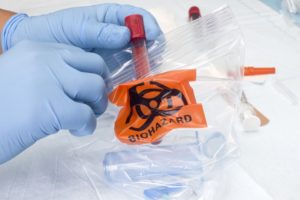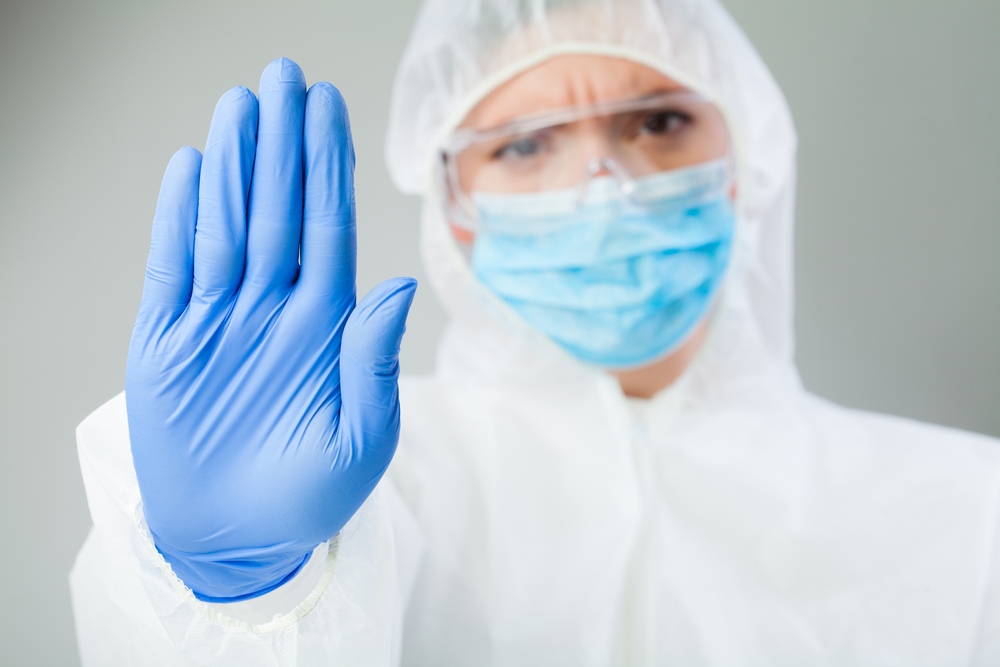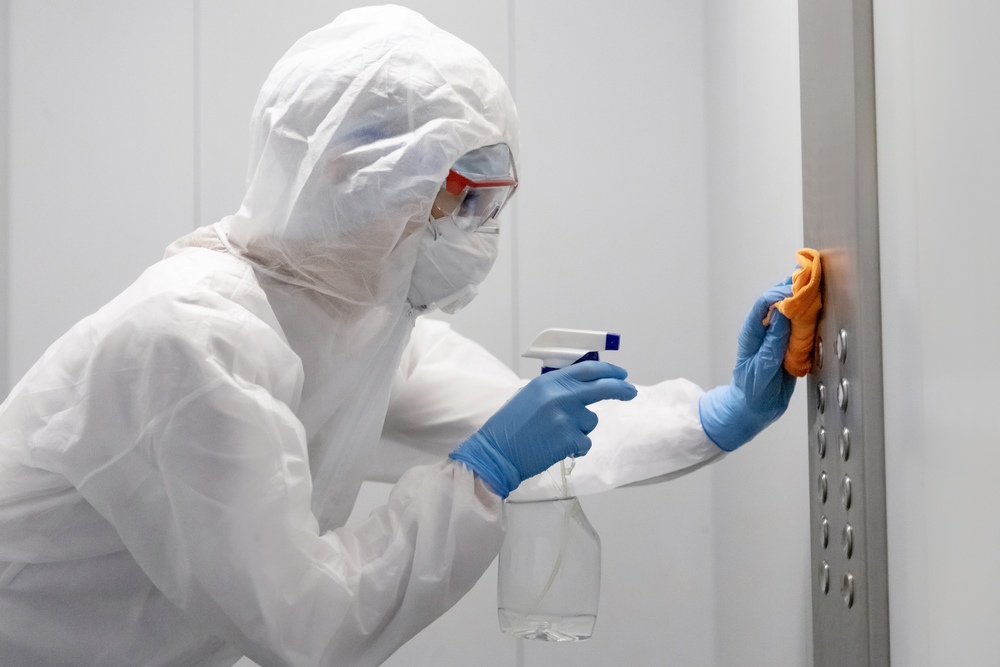Dealing with biohazards is a critical task. It’s also potentially unsafe, so it’s not something anyone should take lightly. If you’re unsure what constitutes a biohazard, you might not know when you’re wading into a situation that should be left to biohazard cleaning professionals.
So what is a biohazard? Simply put, it’s a biological substance that threatens or can threaten human health, though it’s not exclusively dangerous to people, but rather to any organism. Here, we’ll break down the characteristics of biohazards, their types, and how to deal with remediation and disposal of hazardous substances.
Types of Biohazards
Before dealing with a biohazard, you need to know what you’re facing. Of course, bodily fluids constitute one type of biohazard, but there are others.
- Liquid biohazards
- Solid biohazards
- Sharps biohazards
We can find subgroups, such as microbial biohazards, within these types, but these three main classifications cover all biohazards.
Liquid Biohazards
Perhaps the most readily identifiable biohazard, liquid biohazards mainly include bodily fluids. As most know, blood is a biohazard, as it can contain blood-borne pathogens such as HIV and hepatitis, among other less common infectious diseases.
Sometimes we overlook dried blood as a biohazard, though. Technically, it’s not a liquid, but it’s still a biohazard. Hepatitis B, for example, can live in dried blood for up to seven days.
Other bodily fluids that present as biohazards include
- Feces
- Mucous
- Saliva
- Semen
- Urine
- Vaginal fluids
- Vomit
Any of these substances in animal waste also fall into this category. Animal waste can contain pathogens and present as much of a health threat as human fluids, just with different viruses and other nasty things. An infectious disease, after all, is an infectious disease no matter what species of creature gave it to you.
You need to look no further than your cat’s litter box for a notorious example. Pregnant women should not deal with litter boxes, as cat feces can contain Toxoplasma gondii, a parasite that can cause damage to fetuses.
The best approach is one they teach in blood-borne pathogen workshops for work or school: “If it’s wet and not yours, don’t touch it.”
Solid Biohazards
Any surface that comes into contact with liquid biohazards becomes a biohazard. That doesn’t mean that if you cut your hand while slicing onions, you render your kitchen biohazardous. It does mean, though, that the paper towel you use to stanch the bleeding and wipe the blood from the counter is a solid biohazard.
Similarly, gloves used during medical procedures, not to mention scrubs and surgical gowns, are considered solid biohazards. As such, they must be dealt with carefully to avoid any contamination or infections from the fluids on them.
Sharps Biohazards
 The name is self-explanatory, and it’s what it sounds like: syringes and needles. However, the title “sharps” also applies to other medical paraphernalia, like blood vials or urine or stool sample cups.
The name is self-explanatory, and it’s what it sounds like: syringes and needles. However, the title “sharps” also applies to other medical paraphernalia, like blood vials or urine or stool sample cups.
We can’t simply toss these items in the trash. Needles can pierce whoever deals with the trash and infect them with a virus, parasite, or other pathogens. Vials and sample cups are biohazardous due to the blood, urine, or other bodily fluids they contain. Though they aren’t sharp, their relation to needles and other medical equipment categorizes them as sharps biohazards.
What Do I Do With Biohazardous Waste?
If you work in a field where biohazards are part of the job, such as a hospital, your place of employment has procedures to deal with them.
However, it’s unusual to encounter a biohazard in your day-to-day life if you are not in the medical field or another career that works with biohazards regularly. While you may want to grab some paper towels and cleaning supplies and get back to work, you should resist that temptation, as biohazard remediation is a job for professionals.
Biohazard remediation involves removing the biohazardous substance and includes post-removal clean-up. As we mentioned earlier, viruses can live on dry surfaces for some time, so simply removing biohazards and returning to your life is inadvisable, as unclean surfaces can still hold infectious diseases even after waste removal.
Remediation requires the sanitation of any surfaces in contact with the biohazard and deodorizing of the area, as many biohazards smell quite strongly.
This isn’t a job for a can of Lysol and a bandana over your face. Rather, biohazard disposal professionals have regulations governing what they must do as part of the clean-up process. The Occupational Safety and Health Administration (OSHA) outlines these rules to keep everyone safe.
The Hazardous Waste Operations and Emergency Response (HAZWOPER) regulations dictate what kind of clean-up operation professionals use based on the biohazard in question and the location and use of the building where it has occurred.
The professionals at Scene Clean have extensive training and experience in these kinds of operations. If you’re dealing with a biohazard, contact us online for a survey request or call us directly.
How Do I Know if I Need Biohazard Remediation?
We mentioned a kitchen mishap, but such an incident does not typically create a biohazard situation. Of course, if you bleed in the food you were making, you’ll need to throw it out, but disposal of anything that comes in contact with your blood and a quick sanitization of the area should be enough.
However, some more serious situations will require professional remediation services.
Death or Serious Injury
Professional blood cleanup becomes necessary with larger amounts of blood. This might include situations at a site where one of the following has occurred:
- A homicide
- A suicide
- A traumatic accident or injury at home or in the workplace.
The first two situations may present circumstances in which you can’t clean the area until police release the scene. There may also be emotional components that make it difficult for you to clean the area yourself, even if you have the professional knowledge, training, and tools for the job.
Hoarding
Another common instance requiring biohazard remediation is in the aftermath of a hoarding situation. Hoarding is a mental disorder in which an individual goes beyond being a packrat and creates potential biohazards in their living space.
The medical community has enunciated three characteristics, all of which must be present, that constitute someone experiencing a hoarding disorder:
- Hoarders get and keep many possessions that have no real use or value but are nevertheless unable to bring themselves to get rid of them.
- The amount of hoarded things has made normal use of their home or space impossible.
- The hoarder’s life is adversely affected by the hoarding and the resultant clutter.
Like many mental disorders, people on the outside of the situation have difficulty understanding hoarding, but since it can result in health hazards, professional clean-up is a necessity.
The second characteristic of a hoarding disorder means that, at some point, a hoarder may not be able to reach a bathroom. As a result, human waste can accumulate in the hoarder’s space, and if that has been going on for some time, you will encounter a large amount of biohazardous waste.
Animal and insect activity can also result from hoarding, as discarded food can attract both. Animals may then leave their own waste, which can carry pathogens, in the space. A decaying animal carcass can be full of diseases and the fluids produced during decomposition are biohazardous. Finally, insects can bring disease into the home as well.
Infectious Disease Outbreaks
We have all become familiar with infectious diseases over the past few years. It should come as no surprise to know that, in the wake of an outbreak, infectious disease remediation stands as a necessary step toward stopping any further spread of unnatural infectious diseases.
The infamous 1976 outbreak in Philadelphia of Legionnaires disease is a prime example. The infection spreads through the inhalation of water droplets containing the Legionella bacterium. In this particular case, the bacteria had infected a hotel’s water system and made many people sick. Remediation experts removed the bacteria and thoroughly cleaned the water.
Stay Safe From Biohazards

Biohazards present real health dangers to people. When faced with one, you need professionals to address the situation appropriately. At Scene Clean, we have more than 100 years of combined experience with professional remediation and can help with the disposal and cleaning of any hazardous waste.
In a biohazard situation, contact Scene Clean today for assessment, recommendations for action, and professional remediation services. We’re here to help you with whatever biohazards you may come across.



